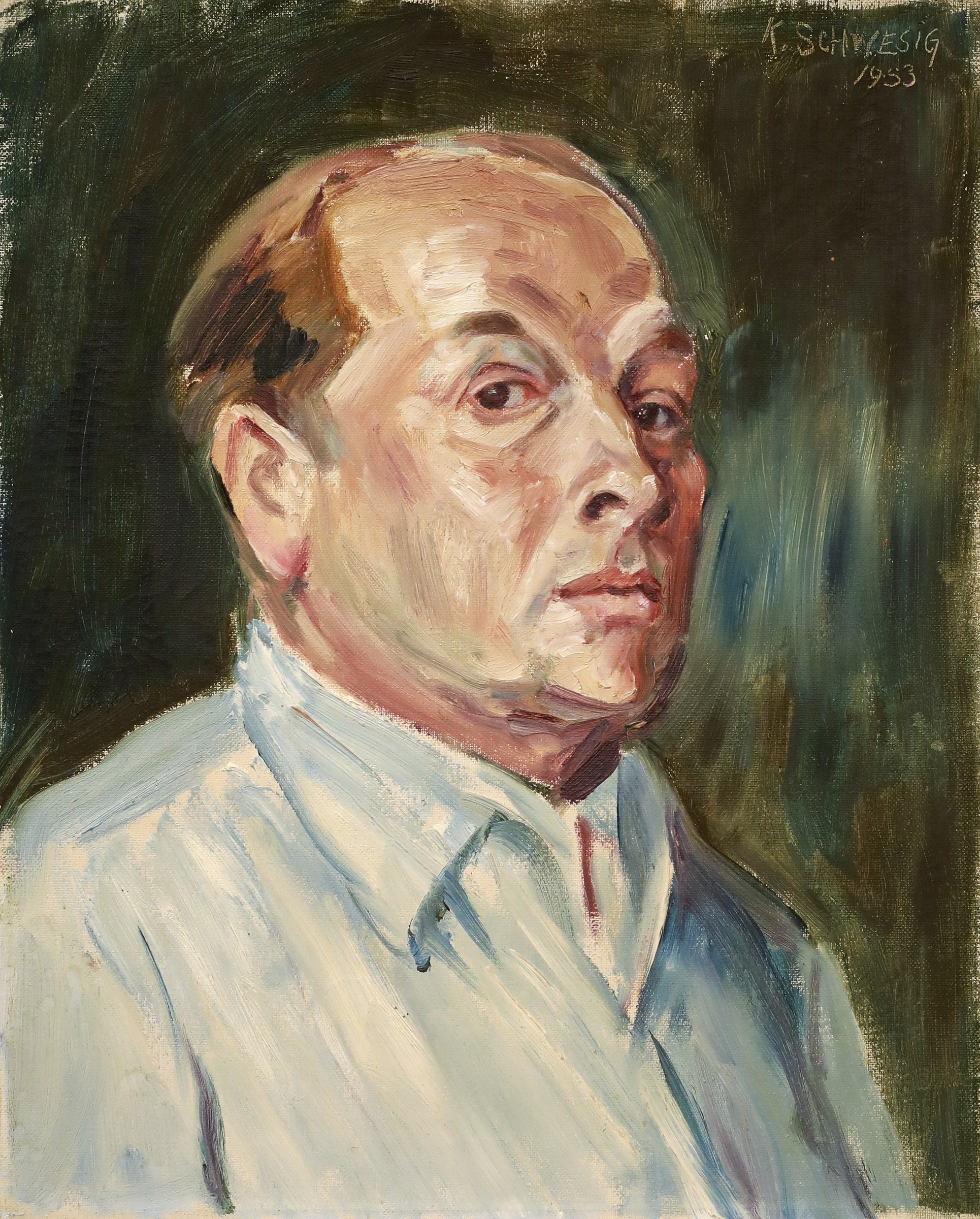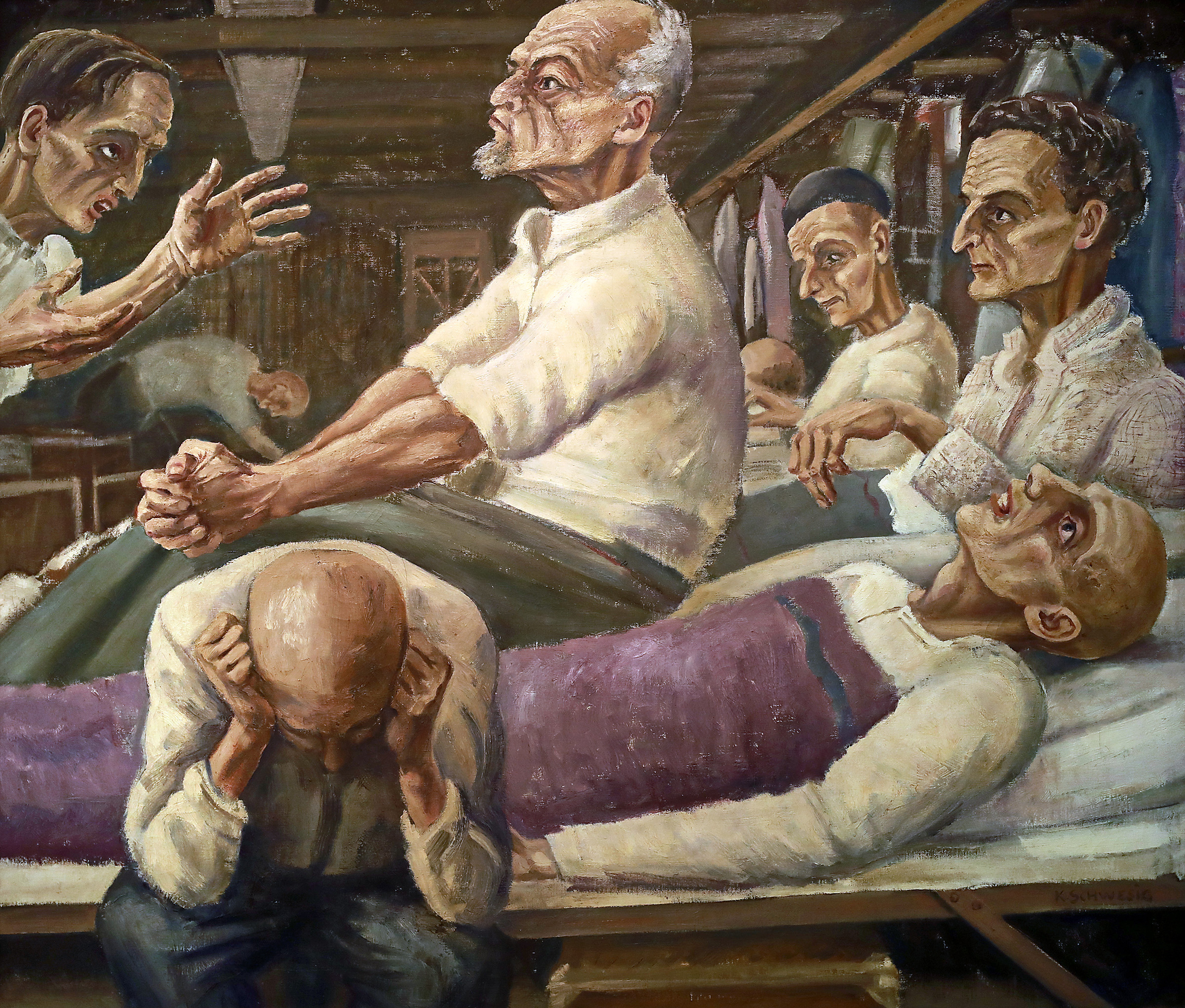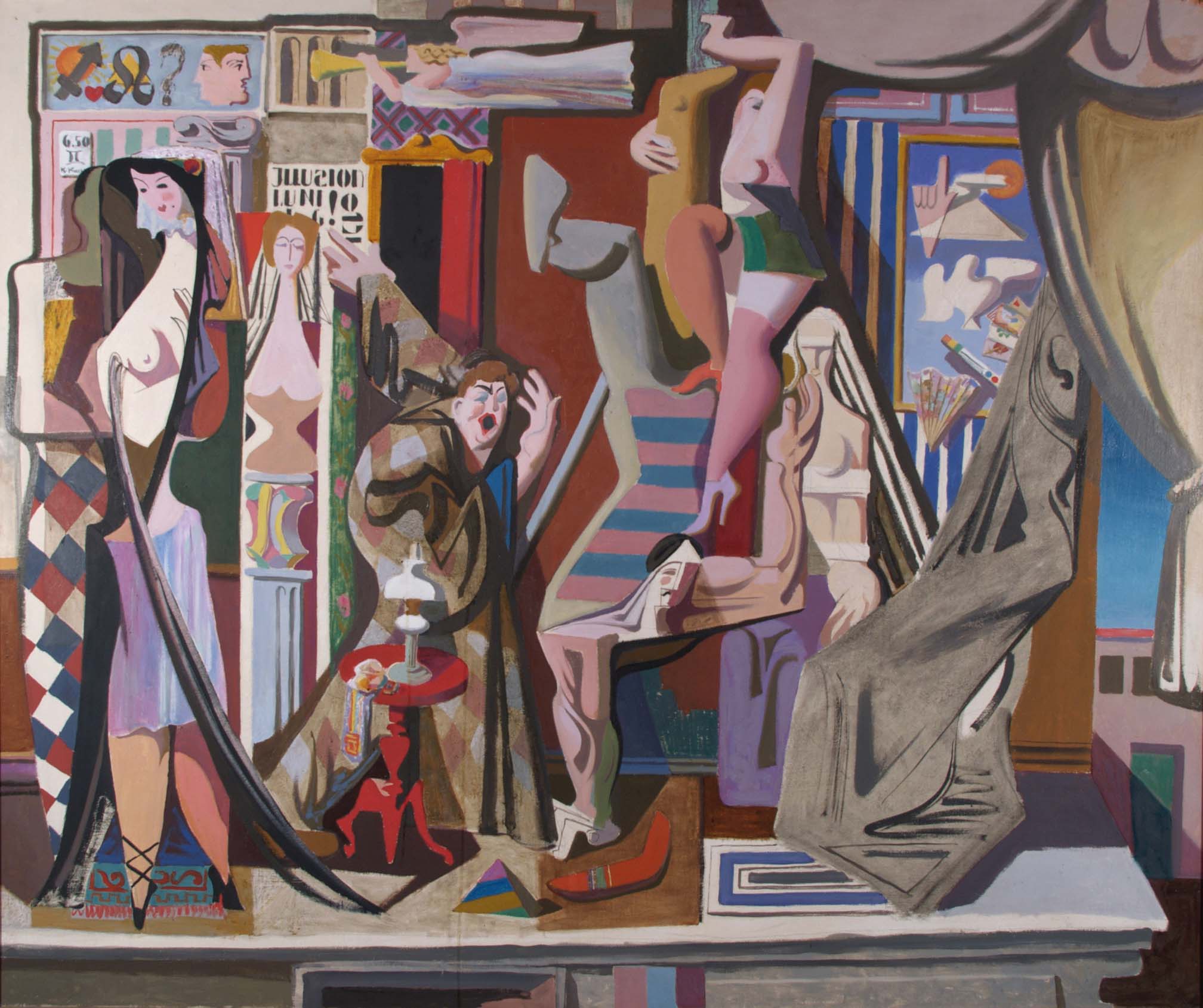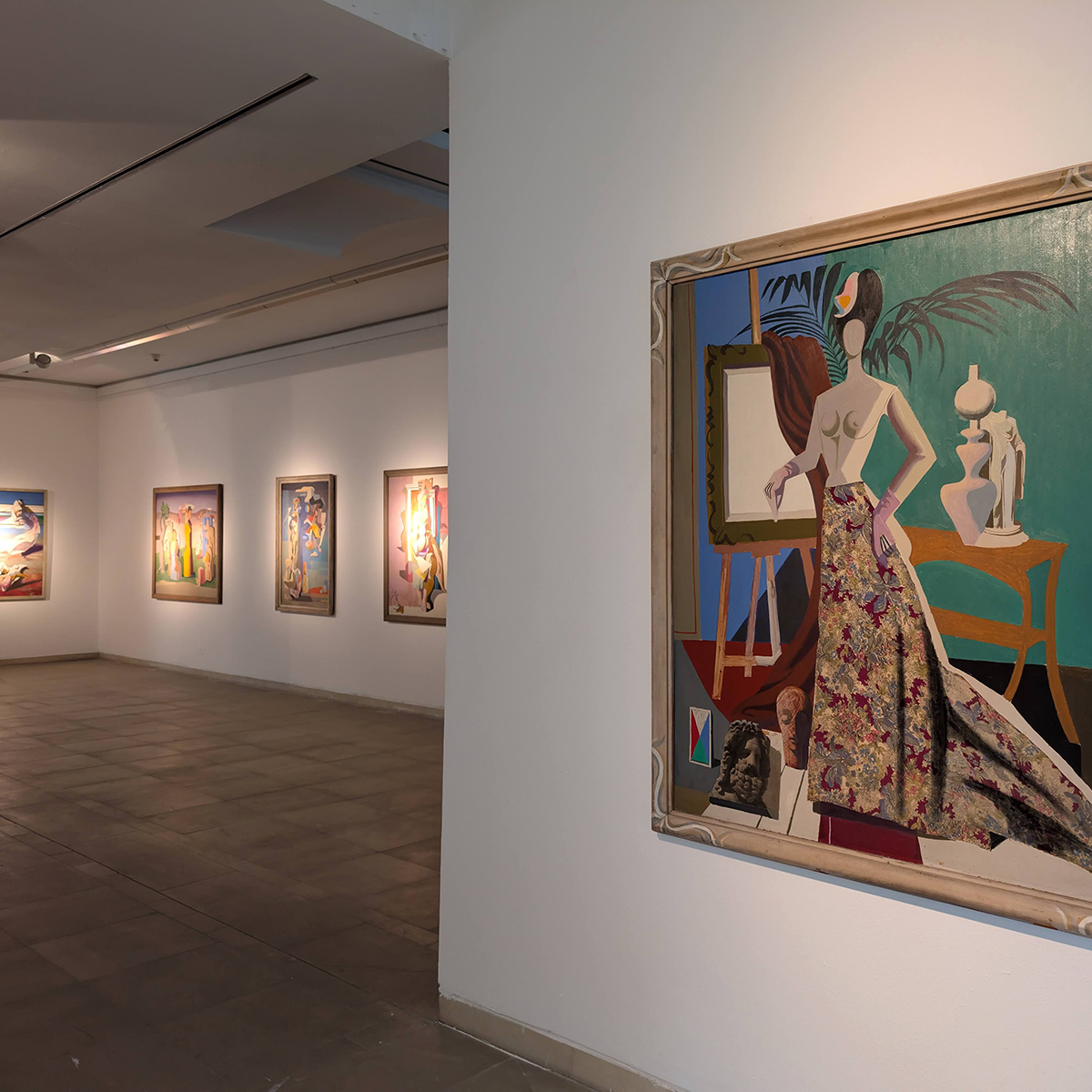Ausschreibung NRW-Forschungs-Volontariat (2026–2027)
12.8.2025

Werden Sie Teil eines einzigartigen Projekts zur Aufarbeitung, Kontextualisierung und musealen Präsentation eines bedeutenden künstlerischen Nachlasses!
Das Zentrum für verfolgte Künste ist ein Museum in Trägerschaft des Landschaftsverbandes Rheinland und der Stadt Solingen. Es betreut die Sammlung der Bürgerstiftung für verfolgte Künste und widmet sich als einziges Museum ausschließlich der Erforschung, Bewahrung, Vermittlung und Sichtbarmachung von Kunst, die unter Bedingungen politischer Verfolgung, Ausgrenzung und Zensur entstand – insbesondere während des Nationalsozialismus, aber auch darüber hinaus.
Das Zentrum für verfolgte Künste in Solingen vergibt im Rahmen des Förderprogramms „Forschungsvolontariat Kunstmuseen NRW“ ein zweijähriges Forschungsvolontariat (01/2026–12/2027) mit dem Schwerpunkt Sammlungsforschung und kunsthistorische Erschließung.
Im Mittelpunkt steht die wissenschaftliche Bearbeitung des neu übernommenen Nachlasses von Karl Schwesig (1898–1955).
Karl Schwesig wurde 1898 in Gelsenkirchen geboren und zeigte schon früh ein außergewöhnliches zeichnerisches Talent. Nach dem Ersten Weltkrieg schloss er sich der avantgardistischen Kunstszene um die Galeristin „Mutter Ey“ in Düsseldorf an. Er war Mitglied im „Jungen Rheinland“ und engagierte sich mit großer Entschlossenheit gegen den aufkommenden Nationalsozialismus. Sein Einsatz für Freiheit und Demokratie mündete 1933 in Haft und Folter. Im Exil in Belgien und Frankreich hielt Schwesig seine Erlebnisse in eindrucksvollen Zeichnungen fest, bevor er 1944 erneut nach Deutschland verschleppt wurde. Nach dem Krieg stieß er mit seinem künstlerischen Zeugnis auf eine Mauer des Schweigens – umso notwendiger ist es heute, sein Werk wiederzuentdecken und sichtbar zu machen.
Das erwartet Sie:
- Dokumentation, Digitalisierung und kunsthistorische Einordnung eines Nachlasskonvoluts von über 500 Werken darunter Zeichnungen, Druckgrafiken, Holzschnitte, Radierungen und Gemälde
- Unterstützung bei der Vorbereitung einer Ausstellung (außerhalb der Förderperiode), und Unterstützung der Museumsarbeit in allen Bereichen
- Persönliche Betreuung durch erfahrene Fachkräfte, ein individuelles Curriculum, Teilnahme am wissenschaftlichen Begleitprogramm und an Tagungen.
Formale Rahmenbedingungen:
- Volontariatsdauer: 24 Monate (01/2026–12/2027), Vollzeit
- Vergütung: 50 % des Tariflohns nach EG 13 TVöD, 1. Jahr Stufe 1, 2. Jahr Stufe 2
- Ausbildung nach DMB-Standards. Die Betreuung erfolgt durch qualifiziertes Fachpersonal in Vollzeit.
Arbeitsplatz & Infrastruktur:
- Ein voll ausgestatteter Arbeitsplatz sowie alle erforderlichen technischen Mittel (inkl. Zugang zu Archiv, Sammlung, Bibliothek) stehen zur Verfügung.
Begleitprogramm und Fortbildung:
- Die regelmäßige Teilnahme am wissenschaftlichen Begleitprogramm der Volontariats-Koordinationsstelle an der Heinrich-Heine-Universität Düsseldorf
- Darüber hinaus werden die Teilnahme an Fachtagungen, Fortbildungen und Lehrgängen auf Landes- und Bundesebene im Rahmen der Möglichkeiten ausdrücklich unterstützt. Sach- und Reisekosten, die nicht über die Förderung abgedeckt sind, werden vom Museum getragen.
Das bringen Sie mit:
- Ein abgeschlossenes Hochschulstudium (Master oder vergleichbar) in Kunstgeschichte, Geschichte, Kulturwissenschaft oder angrenzenden Disziplinen
- Interesse an Themen wie NS-Verfolgung, Exilkunst, Widerstand und Erinnerungskultur
- Freude an wissenschaftlicher Recherche, kontextueller Analyse und musealer Vermittlung
- Selbstständiges Arbeiten, Teamgeist und Kommunikationsstärke.
- Wünschenswert sind erste Erfahrungen in der Museumsarbeit insbesondere im Umgang mit Museumsdatenbanken.
Warum dieses Volontariat?
Sie arbeiten im Spannungsfeld von Kunst, Geschichte und gesellschaftlichem Engagement in einem internationalen Netzwerk. Sie tragen zur Aufarbeitung eines einzigartigen Nachlasses bei und gestalten aktiv eine lebendige Erinnerungskultur mit. Ihr Beitrag wird sichtbar in Sammlung, Ausstellung, Forschung und Bildung.
Bewerbung
Bitte senden Sie Ihre aussagekräftigen Bewerbungsunterlagen (Motivationsschreiben, Lebenslauf, Zeugnisse) bis zum 15. September 2025 an:
Zentrum für verfolgte Künste, Wuppertaler Straße 160, 42653 Solingen
Für Rückfragen stehen Ihnen Dr. Katharina Günther und Dr. Jürgen Kaumkötter gern zur Verfügung.
Gestalten Sie mit uns Erinnerungskultur von morgen und geben Sie verfolgter Kunst eine Stimme!
What’s a Rich Text element?
The rich text element allows you to create and format headings, paragraphs, blockquotes, images, and video all in one place instead of having to add and format them individually. Just double-click and easily create content.
Static and dynamic content editing
A rich text element can be used with static or dynamic content. For static content, just drop it into any page and begin editing. For dynamic content, add a rich text field to any collection and then connect a rich text element to that field in the settings panel. Voila!
How to customize formatting for each rich text
Headings, paragraphs, blockquotes, figures, images, and figure captions can all be styled after a class is added to the rich text element using the "When inside of" nested selector system.
What’s a Rich Text element?
The rich text element allows you to create and format headings, paragraphs, blockquotes, images, and video all in one place instead of having to add and format them individually. Just double-click and easily create content.
Static and dynamic content editing
A rich text element can be used with static or dynamic content. For static content, just drop it into any page and begin editing. For dynamic content, add a rich text field to any collection and then connect a rich text element to that field in the settings panel. Voila!
How to customize formatting for each rich text
Headings, paragraphs, blockquotes, figures, images, and figure captions can all be styled after a class is added to the rich text element using the "When inside of" nested selector system.
What’s a Rich Text element?
The rich text element allows you to create and format headings, paragraphs, blockquotes, images, and video all in one place instead of having to add and format them individually. Just double-click and easily create content.
Static and dynamic content editing
A rich text element can be used with static or dynamic content. For static content, just drop it into any page and begin editing. For dynamic content, add a rich text field to any collection and then connect a rich text element to that field in the settings panel. Voila!
How to customize formatting for each rich text
Headings, paragraphs, blockquotes, figures, images, and figure captions can all be styled after a class is added to the rich text element using the "When inside of" nested selector system.
What’s a Rich Text element?
The rich text element allows you to create and format headings, paragraphs, blockquotes, images, and video all in one place instead of having to add and format them individually. Just double-click and easily create content.
Static and dynamic content editing
A rich text element can be used with static or dynamic content. For static content, just drop it into any page and begin editing. For dynamic content, add a rich text field to any collection and then connect a rich text element to that field in the settings panel. Voila!
How to customize formatting for each rich text
Headings, paragraphs, blockquotes, figures, images, and figure captions can all be styled after a class is added to the rich text element using the "When inside of" nested selector system.
What’s a Rich Text element?
The rich text element allows you to create and format headings, paragraphs, blockquotes, images, and video all in one place instead of having to add and format them individually. Just double-click and easily create content.
Static and dynamic content editing
A rich text element can be used with static or dynamic content. For static content, just drop it into any page and begin editing. For dynamic content, add a rich text field to any collection and then connect a rich text element to that field in the settings panel. Voila!
How to customize formatting for each rich text
Headings, paragraphs, blockquotes, figures, images, and figure captions can all be styled after a class is added to the rich text element using the "When inside of" nested selector system.
What’s a Rich Text element?
The rich text element allows you to create and format headings, paragraphs, blockquotes, images, and video all in one place instead of having to add and format them individually. Just double-click and easily create content.
Static and dynamic content editing
A rich text element can be used with static or dynamic content. For static content, just drop it into any page and begin editing. For dynamic content, add a rich text field to any collection and then connect a rich text element to that field in the settings panel. Voila!
How to customize formatting for each rich text
Headings, paragraphs, blockquotes, figures, images, and figure captions can all be styled after a class is added to the rich text element using the "When inside of" nested selector system.
What’s a Rich Text element?
The rich text element allows you to create and format headings, paragraphs, blockquotes, images, and video all in one place instead of having to add and format them individually. Just double-click and easily create content.
Static and dynamic content editing
A rich text element can be used with static or dynamic content. For static content, just drop it into any page and begin editing. For dynamic content, add a rich text field to any collection and then connect a rich text element to that field in the settings panel. Voila!
How to customize formatting for each rich text
Headings, paragraphs, blockquotes, figures, images, and figure captions can all be styled after a class is added to the rich text element using the "When inside of" nested selector system.
What’s a Rich Text element?
The rich text element allows you to create and format headings, paragraphs, blockquotes, images, and video all in one place instead of having to add and format them individually. Just double-click and easily create content.
Static and dynamic content editing
A rich text element can be used with static or dynamic content. For static content, just drop it into any page and begin editing. For dynamic content, add a rich text field to any collection and then connect a rich text element to that field in the settings panel. Voila!
How to customize formatting for each rich text
Headings, paragraphs, blockquotes, figures, images, and figure captions can all be styled after a class is added to the rich text element using the "When inside of" nested selector system.
What’s a Rich Text element?
The rich text element allows you to create and format headings, paragraphs, blockquotes, images, and video all in one place instead of having to add and format them individually. Just double-click and easily create content.
Static and dynamic content editing
A rich text element can be used with static or dynamic content. For static content, just drop it into any page and begin editing. For dynamic content, add a rich text field to any collection and then connect a rich text element to that field in the settings panel. Voila!
How to customize formatting for each rich text
Headings, paragraphs, blockquotes, figures, images, and figure captions can all be styled after a class is added to the rich text element using the "When inside of" nested selector system.
What’s a Rich Text element?
The rich text element allows you to create and format headings, paragraphs, blockquotes, images, and video all in one place instead of having to add and format them individually. Just double-click and easily create content.
Static and dynamic content editing
A rich text element can be used with static or dynamic content. For static content, just drop it into any page and begin editing. For dynamic content, add a rich text field to any collection and then connect a rich text element to that field in the settings panel. Voila!
How to customize formatting for each rich text
Headings, paragraphs, blockquotes, figures, images, and figure captions can all be styled after a class is added to the rich text element using the "When inside of" nested selector system.
What’s a Rich Text element?
The rich text element allows you to create and format headings, paragraphs, blockquotes, images, and video all in one place instead of having to add and format them individually. Just double-click and easily create content.
Static and dynamic content editing
A rich text element can be used with static or dynamic content. For static content, just drop it into any page and begin editing. For dynamic content, add a rich text field to any collection and then connect a rich text element to that field in the settings panel. Voila!
How to customize formatting for each rich text
Headings, paragraphs, blockquotes, figures, images, and figure captions can all be styled after a class is added to the rich text element using the "When inside of" nested selector system.
What’s a Rich Text element?
The rich text element allows you to create and format headings, paragraphs, blockquotes, images, and video all in one place instead of having to add and format them individually. Just double-click and easily create content.
Static and dynamic content editing
A rich text element can be used with static or dynamic content. For static content, just drop it into any page and begin editing. For dynamic content, add a rich text field to any collection and then connect a rich text element to that field in the settings panel. Voila!
How to customize formatting for each rich text
Headings, paragraphs, blockquotes, figures, images, and figure captions can all be styled after a class is added to the rich text element using the "When inside of" nested selector system.






Materialien
Pressespiegel
Aktuelles

Wechselausstellung
:
„Marian Ruzamski. Die Kunst der Erinnerung“ in Polen
Ausstellung im Palast der Kunst in Krakau
Das künstlerische Werk von Marian Ruzamski verschwand in der Katastrophe des 20. Jahrhunderts beinahe aus dem kollektiven Gedächtnis und erlebt nun eine eindrucksvolle Rückkehr. Ein Jahrhundert nach seiner letzten Präsenz in Krakau wird der Künstler wieder im Palast der Kunst geehrt.


Führung
:
Kuratorinnenführung zu „Karl Kunz. Fantastische Körper“
Mit Dr. Katharina Günther
Am 7. Dezember 2025 um 15 Uhr führt die Kuratorin des Zentrums für verfolgte Künste, Dr. Katharina Günther, durch die Ausstellung „Karl Kunz. Fantastische Körper“.


Führung
:
Öffentliche Sonntagsführung zu „Karl Kunz. Fantastische Körper“
Wiederentdeckung eines vergessenen Künstlers
Am Sonntag um 13 Uhr haben Sie Gelegenheit mit unserer Kunstvermittlerin die Ausstellung „Karl Kunz. Fantastische Körper“ im Zentrum für verfolgte Künste kennenzulernen.








